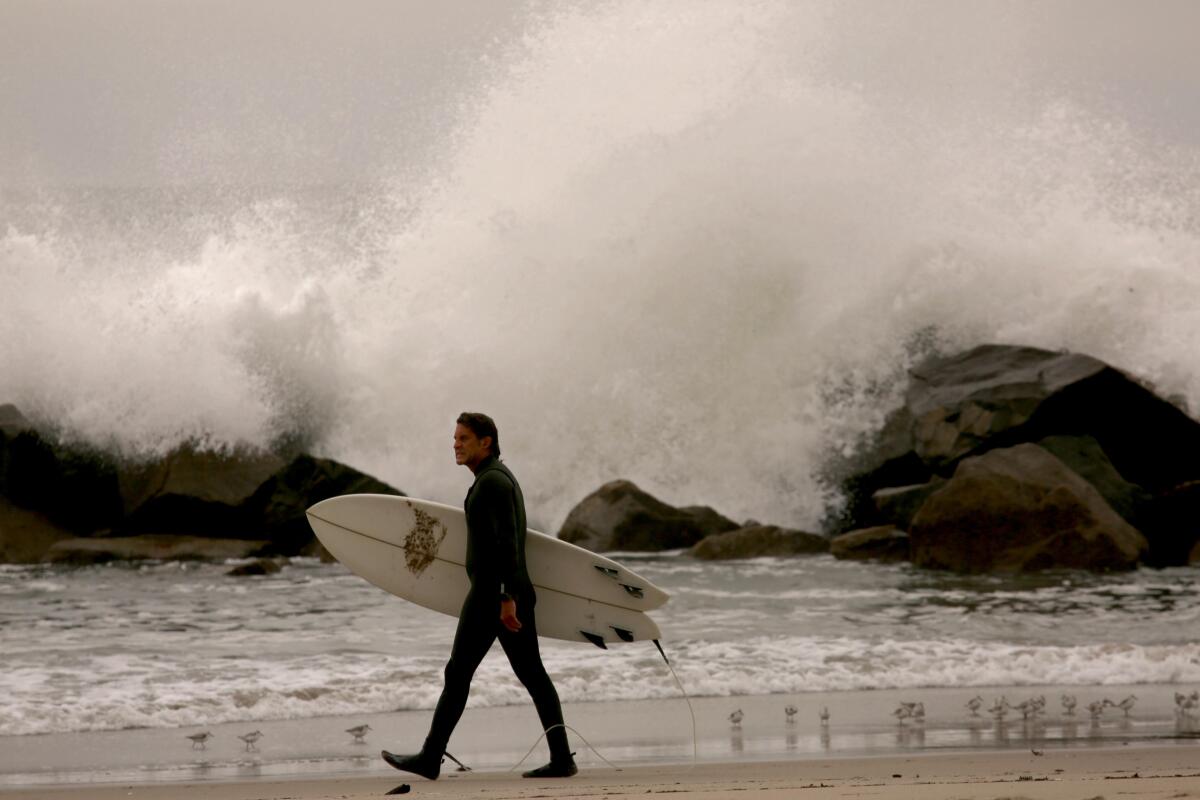What is the expected impact from California coast tsunami event? Here’s what we know

- Share via
A tsunami advisory was issued for the California coast Saturday morning.
Here is what we know:
What is the expected impact?
Officials are expecting waves of 1 to 2 feet in parts of Southern California, but widespread inundation or flooding is not expected. However, it is expected to produce strong currents “that may be hazardous to swimmers, boats, moorings and coastal structures,” the National Weather Service said.
Kristan Lund, a National Weather Service meteorologist in Oxnard, said water surge can “bend around the island and it can also bounce off the shores.”
What is a tsunami advisory?
According to the National Weather Service, an advisory means that the “potential for strong currents or waves dangerous to those in or very near the water is expected or occurring. There may be flooding of beach and harbor areas. Stay out of the water and away from beaches and waterways. Follow instructions from local officials.” An advisory is less severe than a warning, which is issued when an event can cause widespread flooding.
What should people at the beach do?
- Move out of the water, off the beach, and away from harbors, marinas, breakwaters, bays and inlets.
- Do not go to the shore to observe the tsunami.
- Do not return to the coast until local emergency officials indicate it is safe.
- Boat operators, when conditions permit, move boats out to sea at a depth of at least 180 feet.
- Do not call 911 unless it’s an emergency.
Source: L.A. County Beaches; Orange County Sheriff‘s Department
Here are some more general tsunami tips.
What is the timing?
The first signs of tsunami activity began around 7:30 a.m. on the California coast and rippled down the coast through 8:30 a.m. But the activity will continue for hours, and the biggest waves might not be the first.
National Weather Service meteorologist Brian Garcia said in a morning briefing that surges were expected to continue throughout “the vast majority of the daylight hours.”
“But we should see the amplitude start to come down as we get into the afternoon and late afternoon hours,” he said. When the surge falls below one foot and remains there for three hours, the advisory will be lifted, he said.
“The arriving tsunami will come in pulses of surging water levels onto and off of the coast, similar to “high tide.” Do not expect to identify these arriving pulses by large cresting waves/surf,” the National Weather Service in San Francisco said. “These water level surges can overwhelm and overtake people and pull them out to sea.”
Orange County officials said the tsunami could produce dangerous currents and tidal surges throughout the day that would make swimming hazardous. Strong currents were expected in harbors and bays for several hours.
Officials expect the hazardous conditions to continue through the day.
“Tsunamis often arrive as a series of waves or surges which could be dangerous for many hours after the first wave arrival. The first tsunami wave or surge may not be the highest in the series,” the National Weather Service in San Diego said.
More to Read
Sign up for Essential California
The most important California stories and recommendations in your inbox every morning.
You may occasionally receive promotional content from the Los Angeles Times.
















